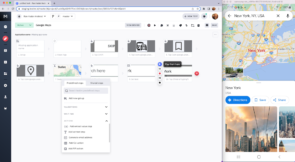It’s one thing for a few individuals to automate a few test cases and run them at scheduled intervals. It’s quite another for an agile team to run hundreds of tests in the continuous integration (CI) server at development milestones. To move from the former to the latter, quality assurance leaders need tools to help them scale testing operations to effectively manage the difficulty of growing tools, people, and processes. Introducing TestOps
Testim Announces TestOps
TestOps is a set of capabilities designed to help managers and quality-oriented development teams efficiently and effectively scale their automation initiatives. TestOps helps users establish and maintain control, improve organization and management, and gain insights to unjumble the growing complexity.
Control
Leaders of quality initiatives should set guiding principles to optimize test architecture and component reuse to minimize maintenance. They should establish policies and controls to ensure their tests meet the same high standards as their code.
Features:
- Branching with conflict resolution (improved) – Synchronize your test branches with your application code, see diffs, resolve conflicts, and cherrypick what to merge. Docs
- Read-only master branch (new) – Protect the test master branch from unauthorized changes. Docs
- Pull requests with approvers (new) – Users can create tests and submit changes as pull requests to be reviewed by SMEs. Docs
The Read-Only master helps us prevent slip-ups, and it makes us much more vigilant of any changes we make. Having the PRs within testim makes sure that we don’t forget to merge a branch after merging the git side.
– Savanna Goodman, QA Automation Engineer at IntSights
Management
As you grow your application and your team, your test suites also swell. A robust classification system can help users find the tests they need faster, reduce switching costs, and improving productivity. Management includes understanding which tests are trusted and CI-ready and which are temperamental and cause unnecessary heartburn. Management at scale should also consist of tools to help balance workload and prevent overlap.
Features:
- Test library (new) – In addition to suites and labels, leaders can organize tests in folders by user type, feature, and more—improving coordination. Docs
- Shared step library (new) – Reusable, shared steps, and groups have a new library, providing quick access in the visual editor to facilitate reuse and improve test architecture. Docs
- Test Status (new) – Set status on tests to alter treatment in the CI server, for instance, quarantine flaky tests from failing builds. It helps build trust that tests are accurate when they run in the CI. Docs
- Test Owner (new) – Assign test ownership to yourself or a team member to prevent duplication of effort, distribute workload, or show responsibility. Docs
We use a test status of “draft” to indicate tests are a work in progress or awaiting peer review. We can now quickly identify where we need to focus our attention.
– Erin Hess, Software Quality Lead, Duzy
Insights
To grow your test automation project in the right direction, you need insights from your testing data. You’ll need to understand the current state and trend of quality and use data to inform team progress or process improvement areas.
Features:
- Failure trends (existing) – Identify troublesome tests and recurring failure types and trends over time to guide process improvement measures. Docs
- Duplication levels (new) – Understand where test steps are duplicated across tests, refactor them, and replace them with manageable shared groups that reduce ongoing maintenance. Docs
- Management reports enhancements (coming soon) – Create and send custom reports to management to demonstrate team and quality status and progress towards goals. Docs
Modern agile development teams comprise software engineers, quality engineers, devops engineers, and product owners. For many of them, quality is a teamwide responsibility. Yet, tools to manage quality processes efficiently are mostly absent. The TestOps capabilities announced today help fill that gap. They enable teams to scale their testing operations efficiently—with control, management, and insights. This announcement is just the start, as we plan to expand our TestOps capabilities and help more customers build quality software faster. Read more.




